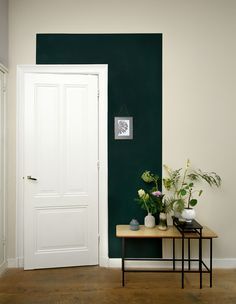Color blocking, a bold design technique inspired by fashion, has found its way into interior design, bringing energy, creativity, and personality to any space. By strategically pairing contrasting or complementary colors, you can create striking visual effects and make your interiors stand out. Here’s a professional guide to mastering the art of color blocking in interior design.
FAQs About Color Blocking
- What is color blocking in interior design?
Color blocking involves using solid blocks of color on walls, furniture, or decor to create bold and visually stimulating spaces. - Is color blocking suitable for small spaces?
Yes! In small spaces, you can use lighter or pastel shades for a subtle effect or bold colors to create the illusion of a larger area. - What colors work best for color blocking?
Choose complementary colors like blue and orange, or contrasting shades like black and white, depending on the mood and style you want to achieve. - Can I incorporate color blocking without painting walls?
Absolutely. Use furniture, textiles, rugs, and accessories to introduce blocks of color without permanent changes. - Is color blocking a long-term design choice?
While trends evolve, color blocking can remain timeless if you choose a palette that resonates with your personal style.

How to Get Color Blocking Right
- Start with a Color Palette
- Select a base color and two or three additional shades that complement or contrast it.
- Consider using a color wheel to ensure harmony between your chosen hues.
- Choose a Focal Point
- Decide where the color blocking will make the most impact—walls, furniture, or decor.
- Highlight architectural features like alcoves or niches with bold colors.
- Balance Bold and Neutral Shades
- To avoid overwhelming the space, pair vibrant colors with neutral tones like white, beige, or gray.
- Use neutrals to anchor the room and let bold colors stand out.
- Experiment with Patterns and Textures
- Mix solid blocks of color with patterned textiles or textured materials for added depth.
- For example, a bold yellow wall can be paired with a navy-blue textured sofa.
- Incorporate Furniture and Decor
- Use furniture like colorful armchairs or cabinets as part of the color blocking scheme.
- Add colorful throw pillows, rugs, or curtains to tie the design together.
- Play with Proportions
- Balance larger areas of color with smaller accents to create a cohesive look.
- Use 60-30-10 rule: 60% dominant color, 30% secondary color, and 10% accent.
- Use Lighting to Enhance Colors
- Proper lighting can elevate the vibrancy of your color blocks.
- Warm lighting makes bold colors feel cozy, while cool lighting enhances crispness.
- Test Before Committing
- Test your colors on small areas to see how they look in different lighting conditions.
- Make adjustments before applying the scheme throughout the room.

Final Thoughts
Color blocking in interior design is an artful way to express creativity and make a bold statement. Whether you’re aiming for subtle sophistication or vibrant energy, the right approach to color blocking can transform your space. Embrace this trend to add depth, character, and a personalized touch to your interiors.





